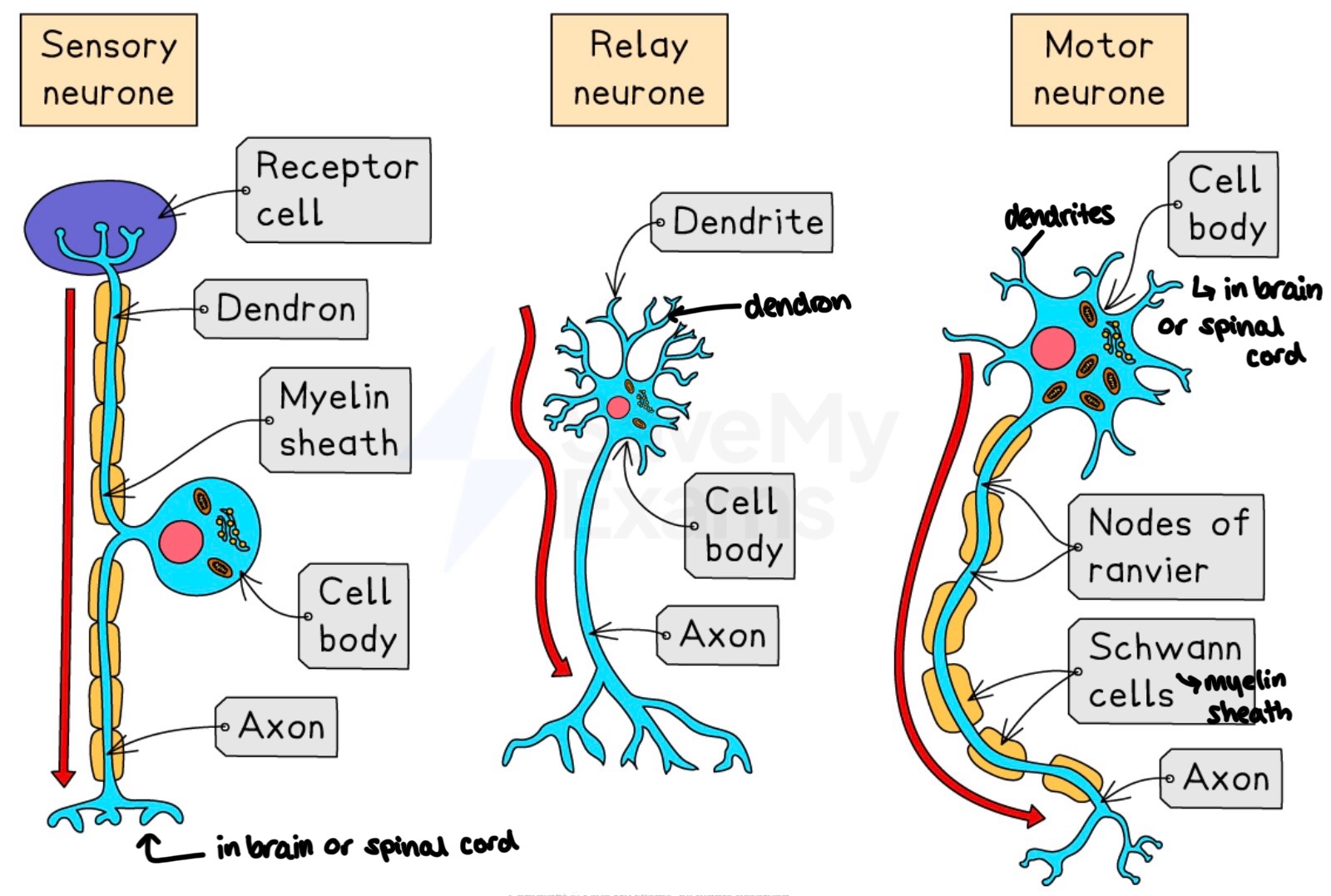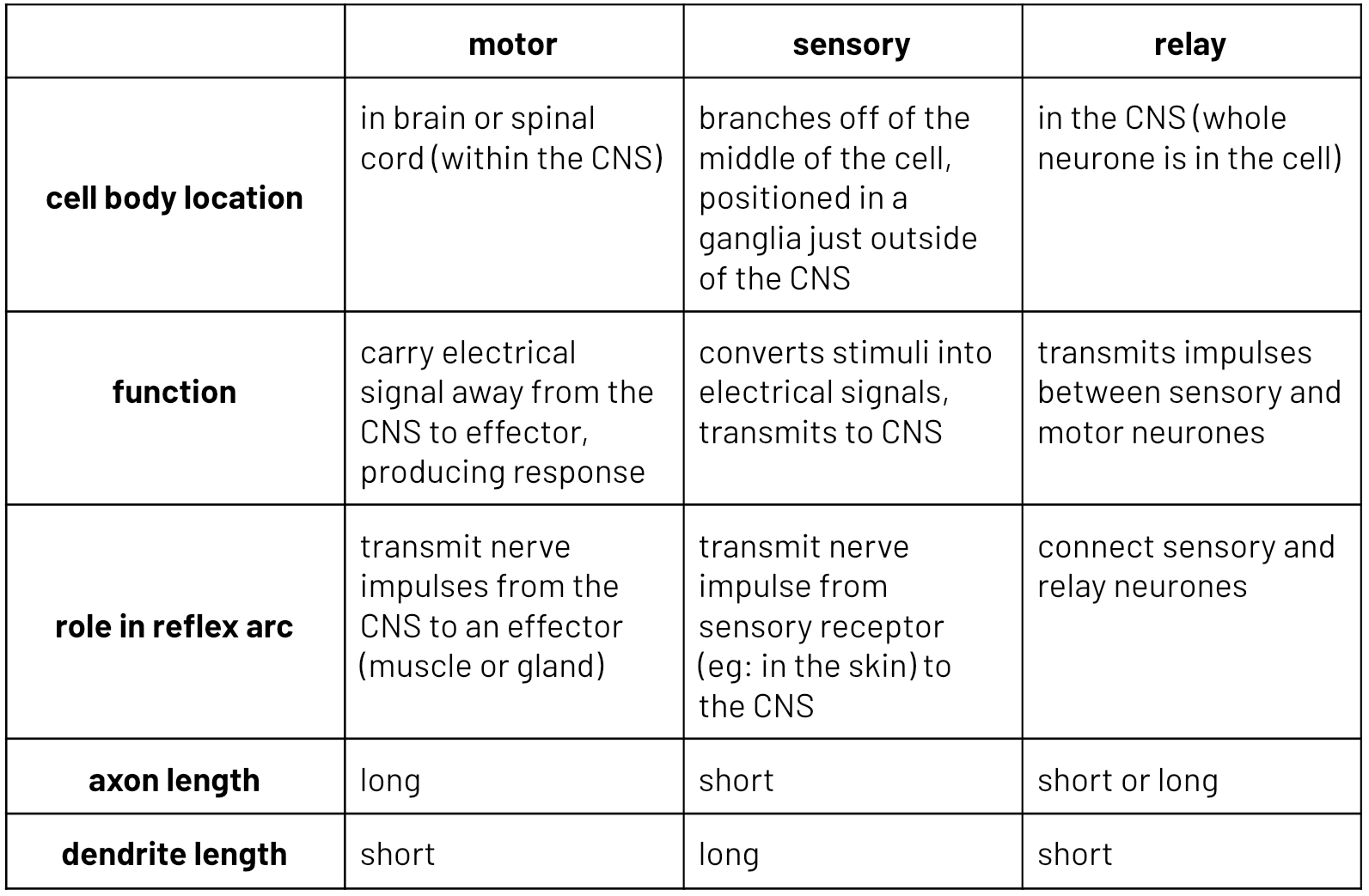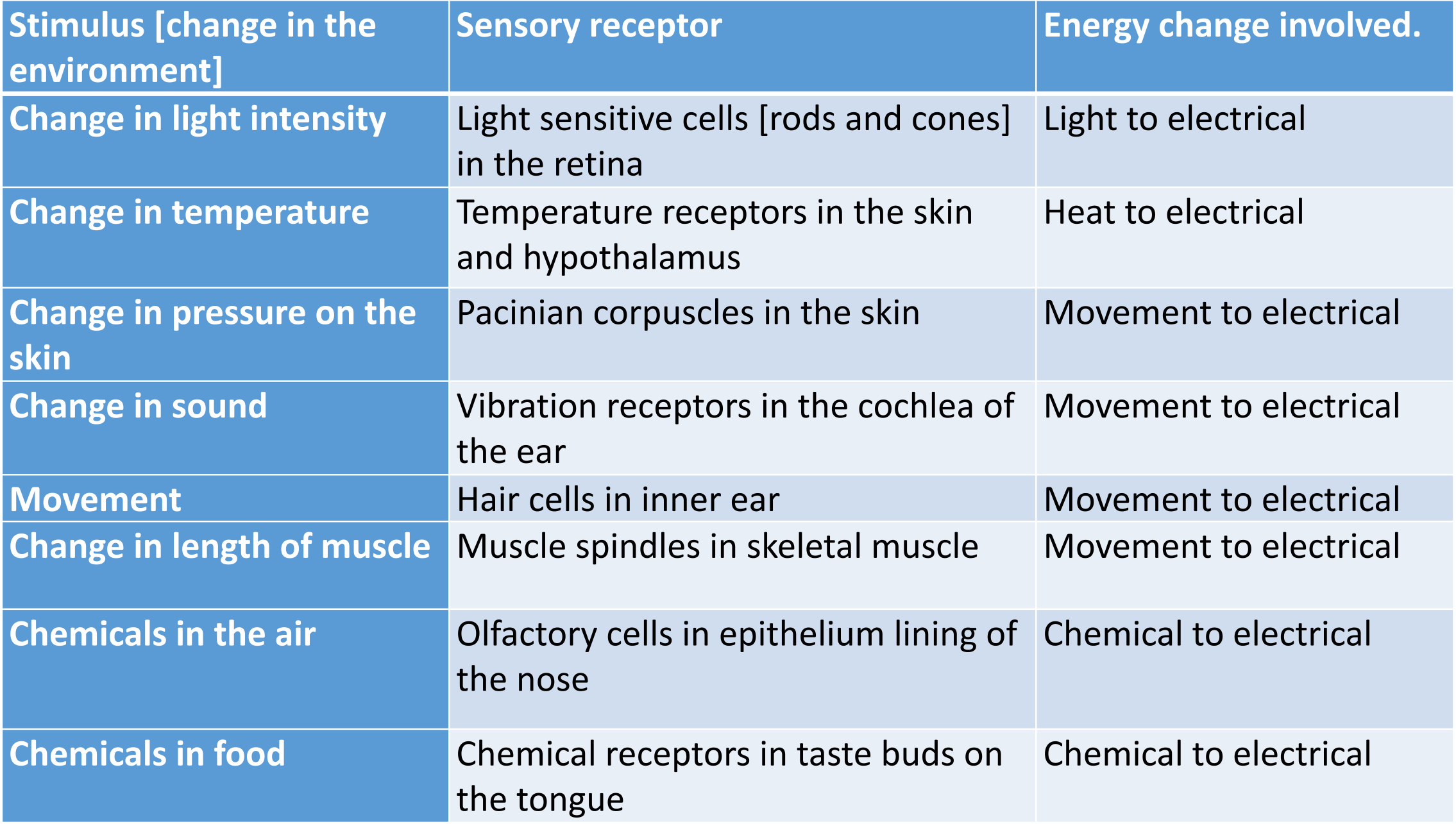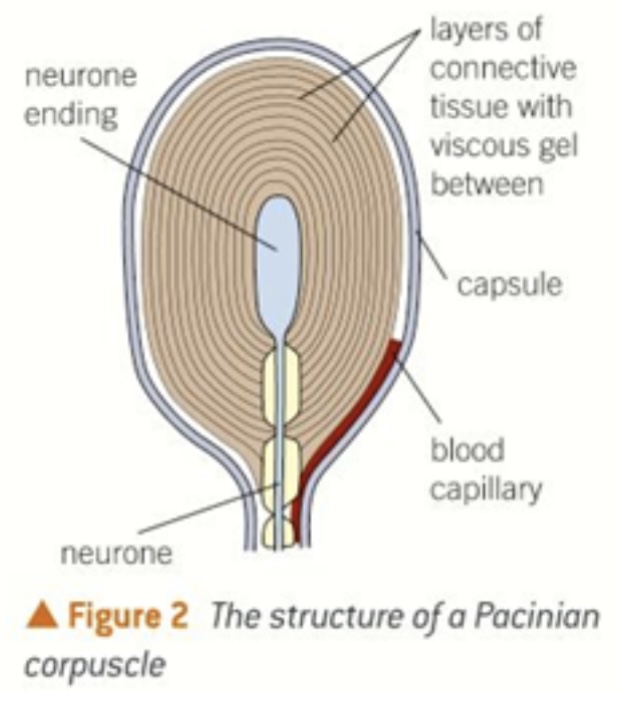neurones
1/19
There's no tags or description
Looks like no tags are added yet.
Name | Mastery | Learn | Test | Matching | Spaced |
|---|
No study sessions yet.
20 Terms
what is a nerve made up of
a bundle of neurones
sensory, relay and motor neurones structures

sensory, relay and motor neurones comparison

cell body
contains nucleus
carries genetic code for production of neurotransmitters
dense group of ribosomes and ER
NISSL granules
site of protein synthesis to make neurotransmitter
sensory neuron cell bodies in dorsal root ganglia
motor neuron cell bodies in spinal cord or brain
axon
transmit action potential away from the cell body
can be over 1 m in length
10 µm diameter
allows for rapid transmission of impulse
reduces the number of synapses required which are the area of slower transmission
contains axoplasm and usual cell organelles
dendrite
transmits action potential towards cell body
dendron
allow communication with other neurones
?
phospholipid bilayer with many protein ion channels
schwann cells
thin cells which have wrapped themselves around the neurone
have a higher than usual phospholipid content in their membranes and fewer ion channels, increasing electrical insulation of the neurone
myelin sheath
the enclosing layer created by schwann cells
nodes of ranvier
regions of uninsulated membrane where ion movement occurs to create action potential
?
Point at which neurotransmitter is released from neurone to transfer the action potential to another neurone
Point at which neurotransmitter is released from neurone to transfer the action potential to a muscle
sensory neurone
cell body positioned in a ganglia just outside of the CNS
transmit nerve impulse from sensory receptor to the CNS.
at the CNS it may sign up with a relay or motor nuerone
motor neurone
transmit nerve impulses from the CNS to an effect (muscle or a gland)
cell body in the CNS
relay neurone
connect sensory and motor neurones
totally within the CNS
myelinated neurones
covered by myelin sheaths
happens when schwann cells wrapped around neurone creating myelin sheath
schwann cell plasma membranes have a higher than usual phospholipid content with few ion channels, therefore iron movement can only occur at the nodes of ravier
this electrically insulate the neurone
what are sensory receptors
Specialised cells
Can detect changes in our surroundings [stimulus]
Initiate a nerve impulse.
Are transducers.
Are specific to a stimulus
what are transducers
a cell that converts on store of energy to another
stimulus converts to nerve impulse → electrical energy
receptors and the energy changes they detect

pacinian corpuscle
detects pressure changes on skin
changes deform the layers of connective tissue
pushes against the nerve ending
initiates a nerve impulse.
is sensitive to changes in pressure, so if the pressure becomes constant it will stop initiating nerve impulses
explains why you stop feeling clothes soon after you put them on
